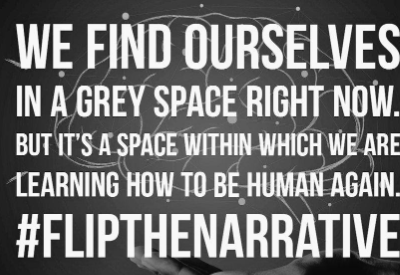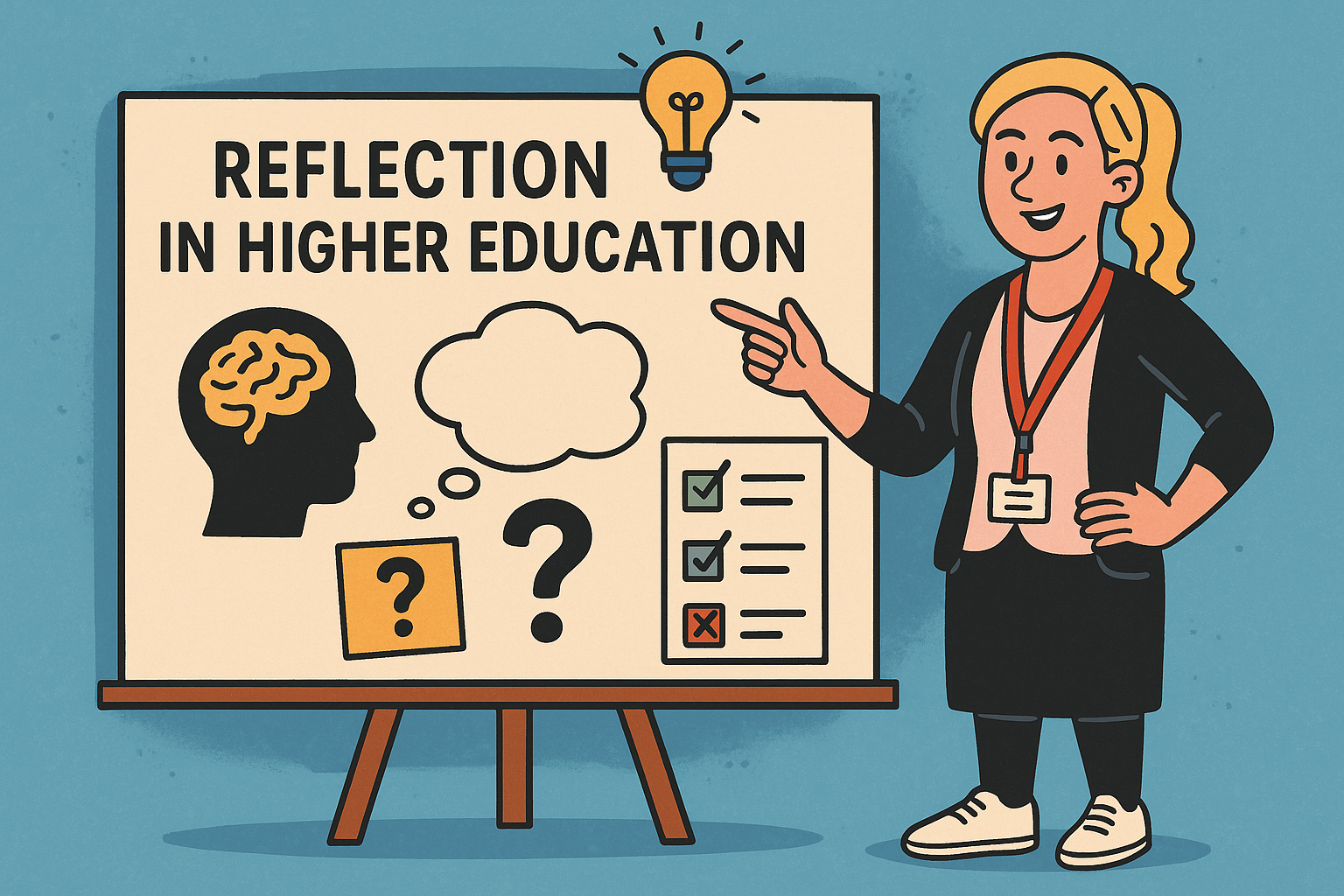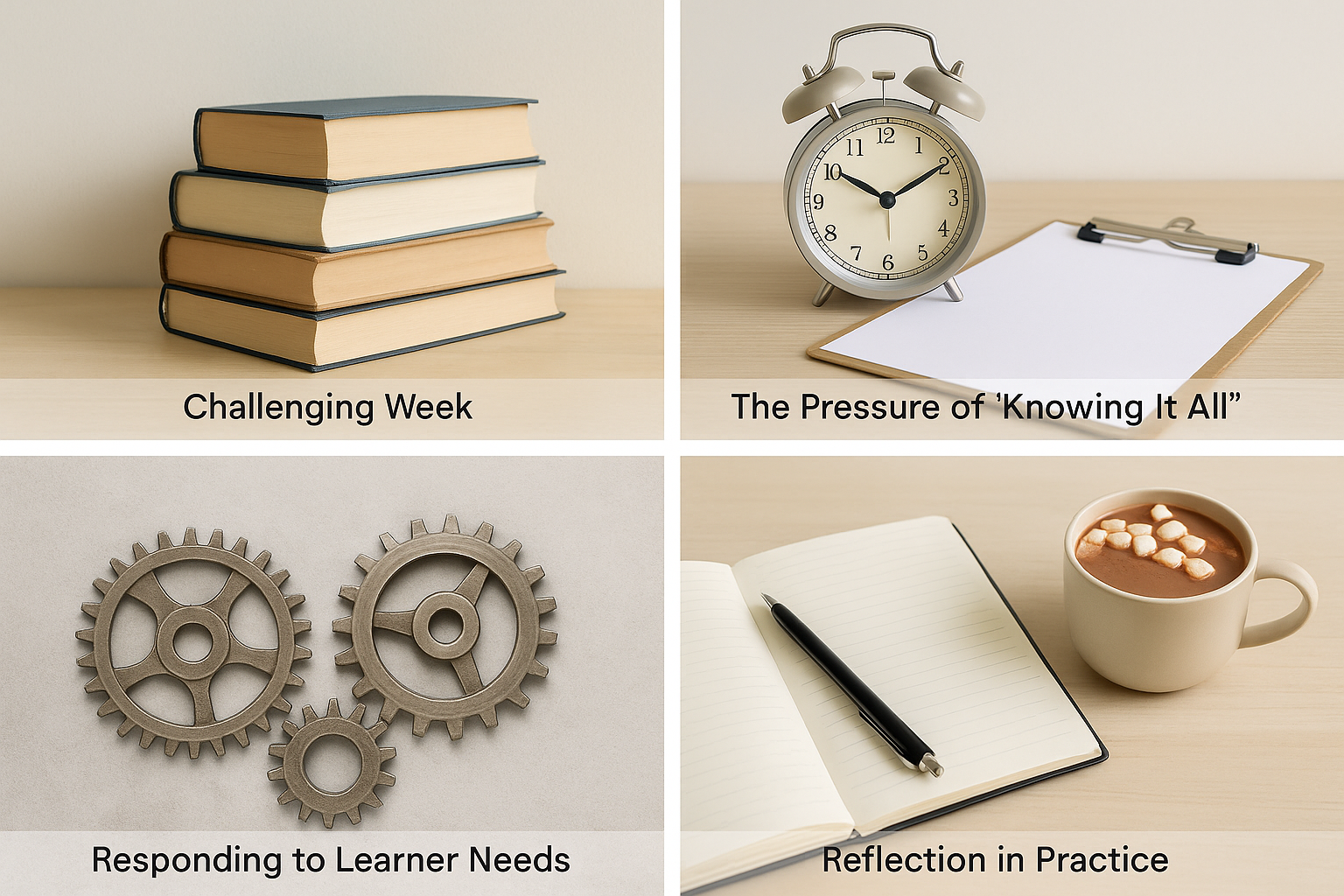


Introduction
Reflection in higher education (HE) teaching is essential for growth, authenticity, and deeper learning. A challenging week in HE teaching can often prompt deeper reflection. When things do not go as planned, it is tempting to view these moments as failures. Yet, on closer consideration, they can be seen as opportunities for growth, part of the ongoing learning process that defines authentic teaching. Reflective practice helps transform these challenges into valuable lessons for both students and educators, showing that teaching is as much about learning as it is about delivering knowledge.

The Pressure of ‘Knowing It All’
In HE, there is a strong pressure to feel like you should have all the answers. Students are fee-paying and understandably want to feel they are receiving value for money. At the same time, lecturers are frequently evaluated through feedback, surveys, and student opinion. While such feedback can be constructive, it can also intensify the sense that every decision and response is under scrutiny.
This pressure risks creating an expectation that educators must present themselves as all-knowing experts. Yet, as Brookfield (1995) argues, authentic teaching involves vulnerability, and acknowledging “not knowing” can strengthen trust. Rather than undermining expertise, it models the reality that learning is a process, one that often involves uncertainty. Pham (2025) reminds us that reflection turns experiences, even uncomfortable ones, into learning. By shifting the mindset from performing perfection to engaging openly, the true value of higher education emerges: dialogue, inquiry, and shared discovery.
This raises an important question: if good teaching is not about having every answer, what does it look like in practice?
Responding to Learner Needs: Inclusive learning in higher education
One response lies in creating conditions where students feel safe, respected, and able to participate. Inclusive teaching requires attention to the holistic needs of students. Maslow’s hierarchy of needs (1943) reminds us that safety, respect, and belonging are prerequisites for higher-order learning. When students feel anxious or excluded, their capacity for engagement is diminished.
Piaget (1952) highlighted the varied ways in which learners process knowledge, while Vygotsky’s concept of the Zone of Proximal Development (1978) emphasised the importance of scaffolding. Together, these theories point towards teaching that stretches learners while providing the support they need to succeed. In practice, this means flexibility, choice, and creating spaces for thoughtful engagement. Activities need not always be high-pressure; often, slower and more considered approaches enable deeper learning. Universal Design for Learning (CAST, 2018) reinforces this principle, advocating for multiple means of engagement, representation, and expression. Thoughtful planning can therefore ensure students contribute in ways that align with their strengths, needs, and learning preferences.
Meeting learner needs is crucial, but teaching is also shaped by forces beyond the classroom. Teaching never occurs in isolation. It is shaped by colleagues, institutional culture, and wider systems. At times, differing approaches or competing priorities can affect confidence. As Trowler (2014) argues, academic development is inevitably influenced by politics, culture, and performativity. Clarity of values and boundaries becomes vital in navigating these dynamics. Open communication, where possible and a commitment to core principles can help educators maintain focus on what matters most: students’ learning and experience. These realities underline why reflection is such a central part of teaching.
Reflective practice in teaching
Reflection is not only a tool for students; it is equally crucial for educators. Bloom’s taxonomy (1956) highlights the progression from recalling information to higher-order thinking, and reflective practice helps students reach these levels. Structured models such as Gibbs’ Reflective Cycle (1988) or Schön’s (1983) distinction between reflection-in-action and reflection-on-action provide clear frameworks for this. For teachers, applying the same tools can transform uncomfortable experiences into opportunities for growth. Gibbs’ model, for instance, discourages dwelling only on negative emotions, instead prompting analysis and planning for future improvement. Dewey (1933) similarly positions reflection as a way of making meaning. In this sense, teaching reflection becomes a mirror: what is asked of students must also be embraced by educators.
Reflection, then, is not about self-criticism, but about seeing the bigger picture. It is easy for educators to focus on what went wrong. Reflection, however, reminds us that teaching is not about flawless delivery. It is about presence, adaptability, and growth through experience. Robinson (2006) argued that education should be about nurturing creativity, curiosity, and resilience, rather than simply delivering information. This perspective reframes the notion of “value for money” in higher education. True value is not found in the illusion of perfection or in an educator who never falters. Instead, it lies in creating environments where students feel engaged, respected, and inspired to learn. That impact lasts far longer than polished performance.
Moving Forward
From these reflections, several key insights emerge:
Teaching, then, becomes less about performing expertise and more about participating in a shared journey of learning. This shift feels more sustainable, more authentic, and more aligned with what higher education should truly be about.
References
Bloom, B. S. (1956). Taxonomy of educational objectives: The classification of educational goals. Handbook I: Cognitive domain. Longmans.
Brookfield, S. (1995). Becoming a critically reflective teacher. Jossey-Bass.
CAST. (2018). Universal Design for Learning Guidelines version 2.2. Retrieved from http://udlguidelines.cast.org
Gibbs, G. (1988). Learning by doing: A guide to teaching and learning methods. Oxford Polytechnic.
Maslow, A. H. (1943). A theory of human motivation. Psychological Review, 50(4), 370–396.
Piaget, J. (1952). The origins of intelligence in children. International Universities Press.
Pham Thi, K. (2025). The relevance of John Dewey’s pragmatism for educational reflection and practice. Cogent Education, 12(1), 2510055. Taylor & Francis. https://doi.org/10.1080/2331186X.2025.2510055
Robinson, K. (2006). Do schools kill creativity? [TED Talk]. TED Conferences.
Schön, D. (1983). The reflective practitioner: How professionals think in action. Basic Books.
Trowler, P. (2014). Doing academic development differently: Place, politics and performativity. Routledge.
Vygotsky, L. S. (1978). Mind in society: The development of higher psychological processes. Harvard University Press.